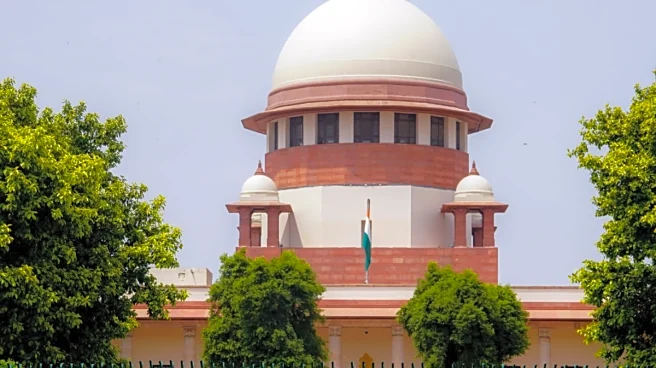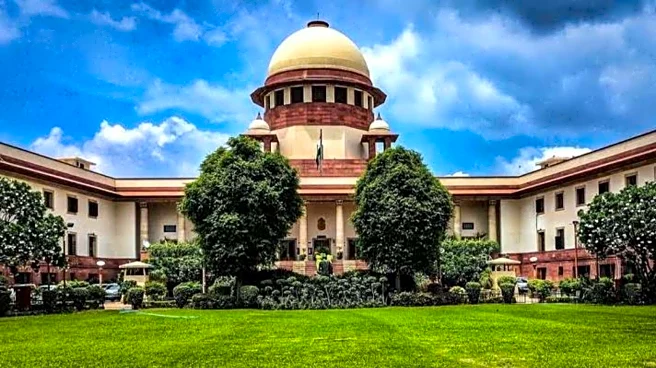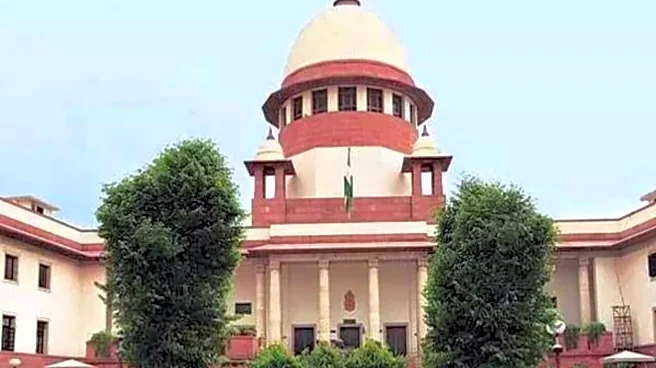The Supreme Court on Thursday delivered its advisory opinion on the Presidential Reference concerning delays by Governors and the President in acting on State bills, ruling that fixed timelines and “deemed
assent” are unconstitutional and violate the separation of powers.
A five-judge Constitution Bench headed by Chief Justice BR Gavai held that the timelines set in the April judgment, as well as the concept of “deemed assent” in case those timelines were not met, amounted to the court usurping the powers of the Governor and the President. The Bench said the Constitution preserves elasticity in how assent is dealt with and does not allow the judiciary to step into a substitutional role.
Top Observations Made By The Supreme Court
The Court held that it cannot set timelines for the President or the Governor to act on bills under Articles 200 and 201. The Constitution, it said, deliberately leaves the assent process flexible, and judicially imposing deadlines violates the doctrine of separation of powers.
The Bench made it clear that the Supreme Court’s extraordinary power under Article 142 cannot override the constitutional powers of the President and the Governors. These authorities act within their own spheres, and Article 142 cannot be used to dilute or displace their role.
While rejecting fixed deadlines, the Court said that in cases of prolonged and unexplained delay, constitutional courts may exercise limited interference. Such intervention is confined to issuing a mandamus directing the Governor to act within a reasonable time, without touching the merits or the discretion involved.
Reiterating the position under Article 200, the Court said that the Governor has only three options: to give assent; to withhold assent and reserve the bill for the President; or to return the bill to the State legislature with comments for reconsideration. These options, it said, cannot be replaced by judicially created mechanisms such as deemed assent. It further observed that Governors cannot act as “super Chief Ministers” and that there cannot be two executives within a State.
A key observation was that bills cannot be placed under judicial review until they become Acts. The functions discharged by the President or the Governor at the bill stage are not justiciable, and pre-enactment scrutiny is constitutionally impermissible.
The Bench stressed that all institutions depend on each other to keep the Constitution working. The functioning of one organ cannot paralyse another, and constitutional accountability ensures the system moves forward.
The Court further observed that the constitutional scheme abhors inaction. While the Governor cannot be forced into rigid timelines, prolonged silence that stalls the legislative process invites limited judicial scrutiny.
Finally, the judges said that it is one thing to insist that one organ not encroach upon another’s powers, but it is something entirely different to suggest that checks and balances should not operate. Non-encroachment does not mean constitutional oversight ceases.
Arguments Before The Bench
During the hearing, Solicitor General Tushar Mehta, appearing for the Central government, argued that the executive and legislature are also custodians of the Constitution and that issuing a mandamus in relation to the Governor’s legislative functions would violate the theory of separation of powers.
He said refusal of assent could be the only option if a State legislature were to pass a “shockingly unconstitutional” bill, citing as an example a hypothetical bill declaring that a State would no longer be part of the Union of India.
Mehta also pointed out that States approaching courts over such issues was a relatively recent phenomenon and that, historically, the system had worked in harmony.
Attorney General R Venkataramani told the Bench that it was not the court’s role to make Article 200 “look better”. He said this was not a matter of reading rights into the Constitution but of respecting its structural design, and that an independent exercise of judgment by the Governor is built into Article 200.
What Triggered The Presidential Reference
The opinion was delivered on a reference made by President Droupadi Murmu under Article 143(1) of the Constitution, which allows the President to seek the Supreme Court’s view on questions of legal or public importance. The reference arose from the Court’s April ruling on delays by the Tamil Nadu Governor, which had prescribed a series of outer limits for action under Article 200.
That earlier judgment held that constitutional silence could not be used to stall the democratic process and laid down specific timelines for withholding assent, reserving bills for the President and acting on reconsidered bills. It also linked inaction beyond those periods to judicial review and, in the case of Article 201, contemplated deemed assent if the President did not decide within three months.
Following that ruling, the President referred fourteen questions to the Court, including whether the Supreme Court can create procedural mechanisms where the Constitution is silent and whether imposing time limits encroaches upon the discretionary space granted to the President and Governors.





/images/ppid_a911dc6a-image-176353583082533855.webp)







/images/ppid_a911dc6a-image-176343963234551383.webp)
/images/ppid_59c68470-image-176339752758822011.webp)
